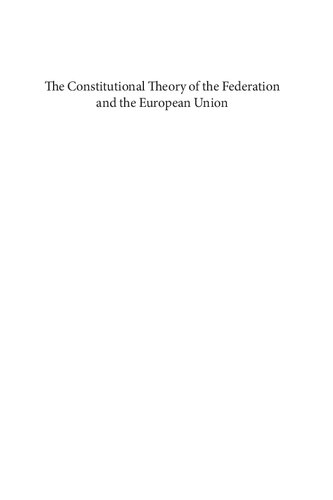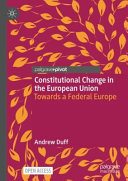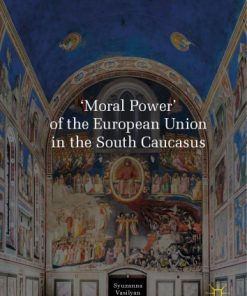(EBook PDF) The Constitutional Theory of the Federation and the European Union Signe 1st edition by Signe Rehling Larsen 0192603019 9780192603012 full chapters
$50.00 Original price was: $50.00.$25.00Current price is: $25.00.
The Constitutional Theory of the Federation and the European Union Signe 1st edition by Rehling Larsen – Ebook PDF Instant Download/DeliveryISBN: 0192603019, 9780192603012
Full dowload The Constitutional Theory of the Federation and the European Union Signe 1st edition after payment.
Product details:
ISBN-10 : 0192603019
ISBN-13 : 9780192603012
Author: Signe Rehling Larsen
From the start of the European integration process, one question has puzzled scholars: what type of political association is the European Union? In absence of an agreed upon response, most scholars have suggested that the European Union is ‘sui generis’. This book challenges the sui generis thesis by demonstrating that the EU is not a unique form of association, but rather a federal union of states, or what this book calls a federation. This is a discrete form of political association on par with, though differentiated from, political modernity’s two other main forms, namely the state and the empire. The federation cannot be understood on the basis of the general theory of the state or its concept of sovereignty. The ‘statist’ imaginary still dominates both the debates on federalism and the EU, meaning that all federal policies are either seen as ‘confederal’ associations of sovereign states or sovereign federal states.
The Constitutional Theory of the Federation and the European Union Signe 1st Table of contents:
I. Federalism and the EU
II. The Constitutional Theory of the Federation
III. The Structure of the Book
1. Constitutional Nature
I. The Federation as a Political Form
A. The Negative Definition of the Federation
B. The Positive Definition of the Federation
II. The Federal Founding
A. Bundesvertrag and Verfassungsvertrag
B. Europe’s First Constitution
III. Birth and Transformation
A. The Double Constitutional Moment
B. The Double Political Existence
IV. The Twin Sources of Governmental Authority
A. The Union and the Member States
B. Constitutional Pluralism
V. The Question of Sovereignty
A. The Legal and Political Conceptions of Sovereignty
B. The Antinomy of Sovereignty
C. Bracketing Sovereignty
D. Sovereignty and Political Stability
2. Origins and Telos
I. The Federal Telos
A. Security and Welfare
B. The Economic Federation
II. The Alternative to Empire
A. Market Creation by Domination
B. After Empires
III. The Reconstitution of Europe
A. The Birth of European Integration
B. The European Economic Federation
C. The Project of a European Defence Federation
3. State Transformation and Teleology
I. The Public Law Structure of a Federal Union
A. Federal Duality
B. Independence and Interdependence
II. State Transformation
A. Becoming a Member State
B. Constrained Democracy
C. Constitutional Modernization
D. The ‘Return to Europe’
III. Teleology and Specialization
A. Union Authority
B. Union Institutions
C. European Guardians
4. Balance
I. The Problem of the Federal Balance
A. The Double Telos
B. The Political Balance
II. The Conditions for the Federal Balance
A. The Principle of Homogeneity
B. Federalism and Nationalism
C. Friend and Enemy
D. Homogeneity in the European Union
E. The Government of Homogeneity and Heterogeneity
III. Admission of New Member States
A. The Government of Accession
B. The Copenhagen Criteria
IV. Constitutional Change and Constitutional Defence
A. The Federal Guarantee Clause
B. The Rise of Authoritarianism in the EU
C. A Guardian of Liberal Democracy?
5. Emergency Rule without a Sovereign
I. Emergency Rule in the Federation
A. Mixed Emergency Rule
B. Federal Execution and Federal Intervention
C. The Doctrine of States’ Rights
D. Competing Claims to Constitutional Guardianship
II. European Emergency Government
A. Eurocrisis Law
B. The End of Constitutional Tolerance?
C. Who Decides?
D. The Greek Crisis
People also search for The Constitutional Theory of the Federation and the European Union Signe 1st:
the constitutional principle of federalism
the constitutional philosophy of the federalists
the constitutional basis of federalism
the constitution federalism
theories of the constitution
You may also like…
History - European History
Constitutional Change in the European Union: Towards a Federal Europe 1st Edition
Jurisprudence & Law Jurisprudence & Law - Constitutional Law
Politics & Philosophy - Politics
Politics & Philosophy - Politics
Politics & Philosophy - Social Sciences
Politics & Philosophy
Education Studies & Teaching - Educational Guidance & Counseling
The Contestation of Expertise in the European Union 1st Edition
Politics & Philosophy - Politics
Integration and Differentiation in the European Union: Theory and Policies Dirk Leuffen
Politics & Philosophy - Politics













